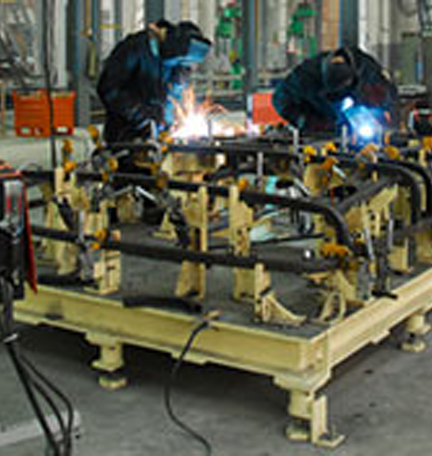One of the biggest macroeconomic trends of the past 40 years has been the inexorable decline of the U.S. manufacturing sector.
From a peak in 1979, the United States has lost nearly 7.5 million industrial jobs, as manufacturers shipped production to low-cost countries. But there are signs that trend may itself be in retreat. A recent study of global manufacturing competitiveness by The Boston Consulting Group (BCG) calls the U.S. a “rising star” whose cost structure has significantly improved relative to nearly all other leading exporters around the globe and second only to China in terms of manufacturing competitiveness.
The key factors BCG cites for the U.S. position are stable wage growth, sustained gains in productivity, steady exchange rates, and a big energy-cost advantage driven by the halving of natural-gas prices since 2005. On the other side of the equation, wages in low-cost countries have soared. Pay and benefits for the average Chinese factory worker for instance, rose 19 percent a year between 2005 and 2010, according to BCG. In the U.S., meanwhile, real wages in American manufacturing actually declined by 2.2 percent since 2005, even as the workforce has become more flexible and productive. Another factor is the growth in automation. Relative to the cost of labor, average robot prices since 1990 have fallen by 40 to 50 percent in many advanced economies, according to a report by McKinsey, making labor costs less of a factor when siting manufacturing. And advanced techniques, such as 3-D printing, promise to further alter the economics of production.
All ashore
Though it seems unlikely that those 7.5 million manufacturing jobs will be returning to the U.S. any time soon, some companies are rethinking their offshoring strategies. A 2012 BCG survey of American manufacturers found that 37 percent of those with annual sales above $1 billion said they were planning or actively considering shifting production facilities from China to America. A similar study by MIT found that 14 percent of multinational manufacturers had firm plans to bring some production back to America, and one-third were actively considering such a move. And a study by Florida-based outsourcing advisory Hackett Group suggests that net offshoring is approaching zero.
Or nearby....
Far-flung manufacturing is losing its luster for many reasons. Rising shipping costs—particularly for companies that make goods with relatively low “value-density” such as consumer goods, appliances, and furniture—makes production closer to the U.S. market more attractive. A recent survey by international business consultants AlixPartners found that 42 percent of senior executives plan to “near-shore” manufacturing operations to Mexico or Canada within the next three years, or already have. But cost is just one factor. Other issues include difficulties in communication, monitoring quality control, and protecting intellectual property across multiple time zones, not to mention the effect a 35-45-day transit time has on a manufacturer’s ability to respond to customer demand. Of course, this need to have manufacturing close to the market cuts both ways, with many companies utilizing their east Asian capacity to supply the exploding Chinese consumer market.
Globalization has not treated U.S. manufacturing kindly, but after several decades, it appears that the sector is beginning to adapt. According to the latest National Association of Manufacturers (NAM)/IndustryWeek survey, manufacturers are showing the highest level of business optimism since late 2012, a reflection of the improving economy, but also of an underlying shift in global macroeconomic trends. There is a long way to go, of course, but the signs are pointing in the right direction.










